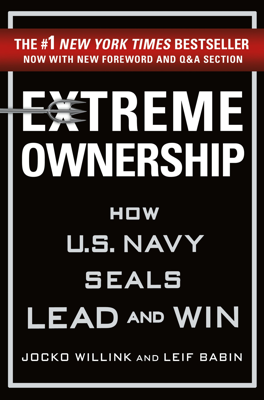Decisiveness amid Uncertainty
Combat Scenario: Sniper Overwatch in Ramadi
Leif Babin discusses a critical situation where Chris Kyle, a seasoned SEAL sniper, reports a potential threat—a man with a scoped weapon in a building. Despite the potential danger posed by enemy snipers who had previously harmed American forces, the identification of the man was uncertain.
Key Leadership Decision
Faced with the pressure from U.S. Army commanders to take action and eliminate the perceived enemy sniper threat, Babin opts for restraint due to the inability to positively identify the target (PID). This decision highlights the leadership dilemma of acting decisively under uncertainty while avoiding potentially disastrous mistakes.
Principle of Decisiveness amid Uncertainty
Babin emphasizes the necessity for leaders to act decisively with incomplete information. He explains that leaders must make the best decisions they can with the available data, ready to adjust as new information emerges. This scenario underlines that while swift decisions are crucial, they must be balanced against the risks of irreversible actions.
- Avoid Paralysis by Analysis: Waiting for perfect clarity can lead to missed opportunities or failure to address threats effectively.
- Educated Guesses: Leaders should base decisions on experience, knowledge of the enemy, and the most reliable intelligence at hand.
Business Application: Leadership Crisis in a Software Company
A subsidiary engineering company faces a leadership dispute between two senior engineers, Eduardo and Nigel, threatening the company’s stability. Both engineers are at odds, creating a toxic work environment and uncertainty about their future with the company.
- Critical Decision Point: The CEO, Darla, is presented with options by Jocko that include firing both engineers to prevent further damage to company culture and productivity.
Resolution and Outcome
Darla chooses to decisively fire both engineers after considering their negative impact on the team and overall company performance. This bold move is supported by preparations for immediate replacements, showcasing swift, decisive leadership that prioritizes the long-term health of the company.
- Empowering New Leaders: Promotions from within the team not only address the immediate leadership vacuum but also serve to enhance morale and commitment among remaining team members.
Conclusion
Both the military and business scenarios reinforce the importance of decisiveness amid uncertainty. Whether preventing potential fratricide on the battlefield or addressing toxic leadership in a corporate environment, the ability to make informed yet timely decisions is crucial for effective leadership. This principle ensures that organizations, whether military or corporate, can navigate crises and maintain operational integrity.
